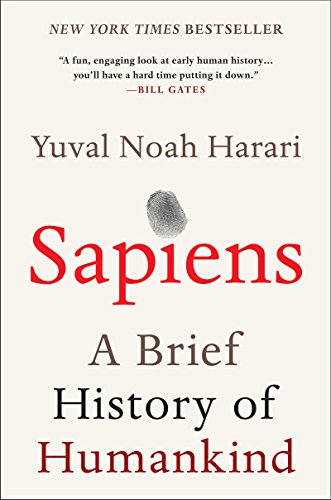

This article is an excerpt from the Shortform summary of "Sapiens: A Brief History of Humankind" by Yuval Noah Harari. Shortform has the world's best summaries of books you should be reading.
Like this article? Sign up for a free trial here .
What is animism? How is it related to theism? Who held animistic beliefs?
Animism is the belief that every animate and inanimate thing has thoughts and feelings and can communicate with people. This belief system is non-hierarchical—all beings are equal.
We’ll dive deep into the animism definition, discussion animism’s origin, and look at animism’s history.
Animism Definition
- Animism: The belief that every animate and inanimate thing has thoughts and feelings and can communicate with people. This belief system is non-hierarchical—all beings are equal.
- Theism: The belief in a god or gods that are above us in status and create the universal order of our world. This belief system is hierarchical—divine beings outrank non-divine beings.
Animism’s Origin
Most experts agree that early foragers were animists rather than theists. This was animism’s origin.
Our forager ancestors probably believed that all animate things (mice, deer, and spirits) and inanimate things (rocks, rivers, and trees) had feelings and desires. They also had the capability to reward or punish Sapiens for their actions.
Because animism is non-hierarchical, there were no walls separating people from the rest of the natural world. People were not of a higher status than other animals, plants, spirits, and inanimate objects. Forager Sapiens didn’t believe that spirits, trees, and animals existed to serve or please them.
Animism doesn’t refer to a particular religion. Within this general concept, there were probably many religions practiced and beliefs believed by foragers.
Animism History
Animism is a belief system in which all objects, animate or inanimate, have a soul. According to these religions, humans must consider the feelings and desires of rocks and mountains as well as plants and other animals.
As we’ve discussed, animism’s origin starts with our early ancestors. Most religions of hunter-gatherers were animistic. These religions were local rather than universal. Hunter-gatherers typically didn’t travel far in their lifetimes, so they shaped their religion around their own particular territories. This meant that the religion of one forager band in the Ganges Valley might forbid the cutting down of a fig tree to keep the tree’s spirit from exacting revenge. The religion of a forager band in the Indus Valley might forbid the hunting of white-tailed foxes because once a white-tailed fox had led the band to an area abundant with obsidian.
Because they weren’t universal, these religions weren’t missionary. There was no reason for the Indus band to try to convince the people in the Ganges band not to hunt white-tailed foxes—the Ganges band didn’t have any stories or experiences related to the fox, and might not even have foxes in the area.
The Rise of Polytheism
The Agricultural Revolution led to a religious revolution, away from animism. In previous, animistic belief systems, man was no better than other animals, plants, and geographical features. For instance, man didn’t consider himself superior to a sheep just because he hunted sheep, just as he wouldn’t consider himself inferior to tigers just because they hunted him.
But when hunter-gatherers became farmers, suddenly man had dominion. Rather than equals in the spiritual realm, sheep and grains became objects farmers owned and protected jealously. Man and his concerns became the center of religious belief.
While man suddenly had more control over the animal and plant kingdoms than he’d ever had before, his control wasn’t complete. He still had to contend with drought, epidemics, and sickly lambs. He could no longer pray and make offerings to the ewe to have healthy lambs, as he could have in an animate religion, because the ewe was now his property and theoretically under his control. You don’t pray to something less powerful than you are. Man had to find someone or something else to worship, someone to control the things he couldn’t.
Gods originated as a way to solve this problem. The job of gods was to mediate between humans and the rest of the natural world, over which man now wanted control. Humans worshipped gods in return for dominance over plants and animals.
As empires and trade networks grew, the worlds of individuals got larger. Rather than appealing to a few local gods, people now needed a pantheon that could address all the new needs of an expanded world. This was the origination of polytheism, the belief in many gods. Gods usually had distinct personalities and functions. For example, there was a goddess to address infertility, a god to make it rain, and a god to bring luck in war.
Although polytheism came to dominate the religious landscape, animism didn’t disappear. Legacies of animistic belief remain today. What did disappear was the belief that humans were just one among many beings with souls. Polytheism brought man center stage and changed the way we viewed ourselves and our world.
———End of Preview———

Like what you just read? Read the rest of the world's best summary of "Sapiens" at Shortform . Learn the book's critical concepts in 20 minutes or less .
Here's what you'll find in our full Sapiens summary :
- How Sapiens outlived and outlasted the 8+ other human-like species on Earth
- The 3 critical revolutions in human existence that led to our domination of the planet
- How much of what powers our world today is really just a shared mass delusion
- What the future of humanity might look like






